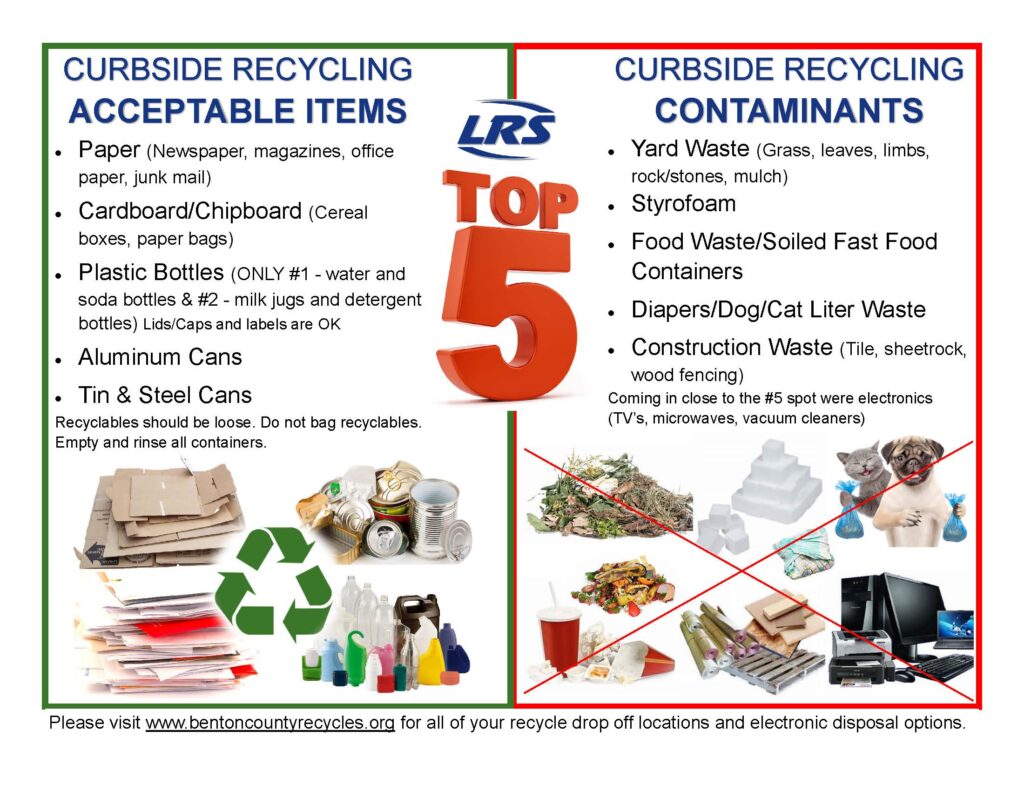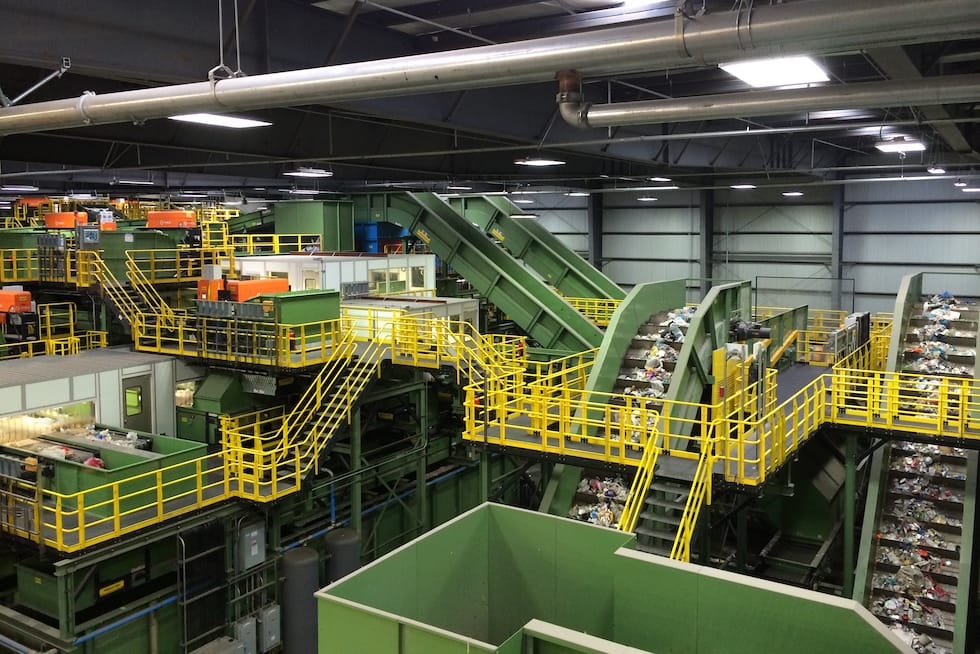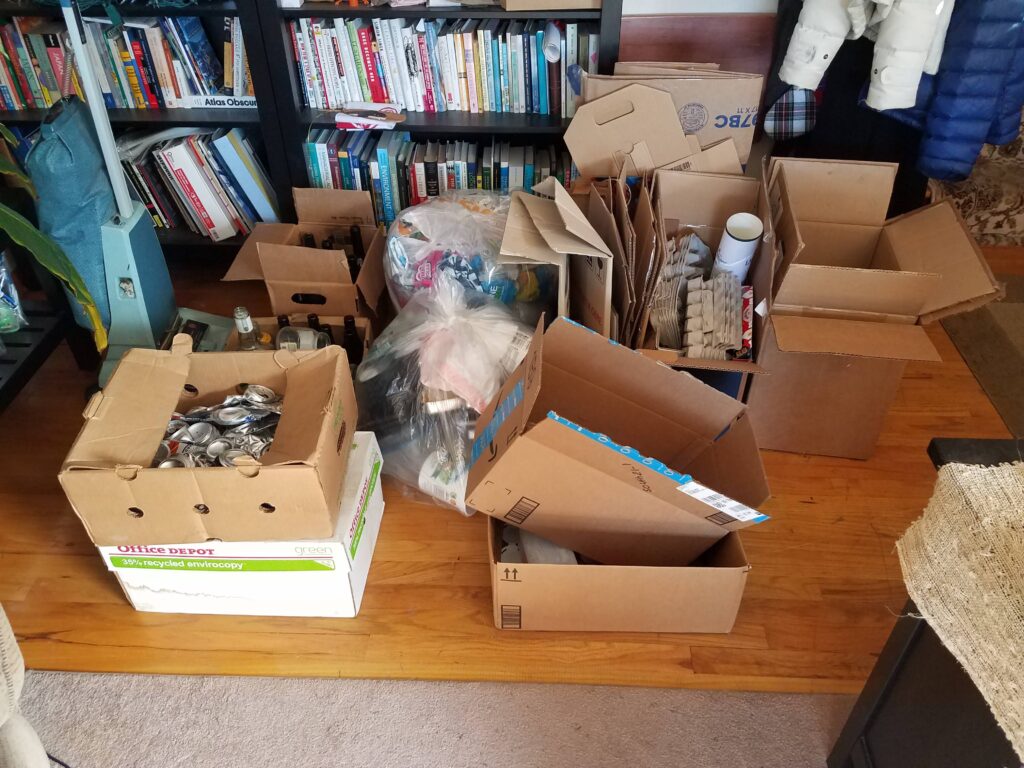Part 3
A few years ago I remember my father-in-law commenting about how he never saw his neighbor putting out any recycling – ever – for curbside pickup. I proudly explained to him that that was absolutely possible, that his son and I never put anything in curbside recycling, and that I generated next to no garbage myself: since I didn’t eat meat, all of my food waste was compostable and went to the back yard, and I took all of our non-food waste (almost exclusively recyclable) to our local recycler directly, especially since they had started taking #1 through #7 plastics. It simply came down to taking that extra step to sort and deliver it myself. Ah, sweet summer child… nothing is “simple” when it comes to plastics.

Image credit: [1]
I like to remind people that we’re all learning (or at least should be) all the time. The core of the scientific process involves asking questions, incorporating new information, and adjusting our perspectives if our latest findings conflict with what we have already established. I have now adjusted our in-house recycling sorting process so many times (based on what I learn about local waste management practices) that I think my husband has just given up and leaves things for me to sort “correctly.” And who can blame him? Because after this July, I will be switching up our process again.
2024 Challenges
I have participated in Plastic-Free July – and written about it – for at least five years, typically pledging to buy, use, or discard less single-use plastic. [2] Most years, July creeps up on me, and many times I haven’t started the month with a formal plan for what steps I’m going to take to reduce my plastic impact. That said, I also tend to be pretty effective at scrambling to assemble a last-minute goal and (largely) follow through over the course of the month. 2024, however, has really been a challenge for me, and I recognize that I have been in a combination of survival mode and high-functioning depression since January. Because of that, I truly needed to accept that I had no additional capacity for anything more than what I was already doing to get through the day: if I was eating food that came in plastic, at least I was eating.
But I also couldn’t let this month go by unmarked, especially since I know how significant a role plastics play in our lives, as a greenwashed ubiquitous convenience, as well as a significant public health and climate risk. The plastic industry (and by extension the oil and gas industry) benefits from the lack of public awareness of the climate and public health risks associated with their products and what really happens when something is “recycled.” While I try to keep my day job and this blog as separate as possible, Plastic Free July has become a time when I truly feel the need to share whatever I can about our growing dependency on, misconceptions about, and mismanagement of plastic.

Image credit: [3]
Given the specter of chemical recycling facilities on our doorstep here in western Pennsylvania, I wondered if the “hard-to-recycle” plastics I had been taking to be “recycled” were destined for one of the fuel-to-oil facilities described in last week’s post. [4] I figured if changing my consumption behavior was going to be a challenge this year, I could at least take the opportunity to get some additional information about what happens to the single-use plastics I do discard in order to inform whether I was doing the least-bad thing with my garbage (and maybe that would be enough to absolve a bit of my plastic consumption). Fortunately, I knew exactly where to start.
Local Collections
In a world of curbside recycling and all the complications it creates, [5] I am grateful to have a recycling company that accepts sorted materials just four miles from our house. For more than five years I have left our curbside bin largely unused, prompted by changes in our local recycling collection guidelines. [6] Around the time of my Zero Waste Lenten challenge, [7] I learned what a Materials Recovery Facility (MRF, pronounced like “Murph”) is and what it does. MRFs accept commingled streams of ostensibly recyclable materials (largely coming from municipal recycling programs) and separate out the recyclable / recoverable materials. Curbside recycling is frequently commingled, with the goal of making participation easy for residents, but the less work residents do to ensure that they’re only putting clean, recyclable materials on the curb, the more work has to be done at the MRF.
Many MRFs have sophisticated sorting machines that remove some of the physical labor from the process. However, these expensive machines can be damaged by certain materials, as I learned from someone who used to manage a MRF. Back in 2019, word had it that many municipalities in the Pittsburgh area stopped accepting glass because it created a lot of wear and tear on the MRF’s sorting machines, and broken glass could easily contaminate other recyclables, which would then have to be discarded and landfilled. Around that time, Michael Brothers Hauling and Recycling [8] (not a MRF) started accepting glass, and Pennsylvania Resources Council [9] started hosting pop-up glass recycling events. These companies recognized that conscientious residents wanted to keep recycling and worked around the system to find buyers for the glass.

I heard from someone at Michael Brothers at the time that they weren’t really making a profit on the glass, but that they were responding to a community request. From a business standpoint, I can understand why they might offer a service that didn’t generate a profit: as loss-leader for other services. Since I was already taking my glass to Michael Brothers, I figured I could take my aluminum, steel, and cardboard there as well – and they do make a profit on the metals they collect. While Michael Brothers didn’t accept paper, there was an Abitibi bin [10] conveniently located down the street (though unfortunately it’s no longer there), so I could handle most of my recycling needs in one trip a couple times a month. And doing things that way, I was also more confident that my recyclables would get where I wanted them to go, without accidental contamination in the commingled recycling stream or literally falling through the cracks at the MRF.
There was such a groundswell of local (and non-local) residents dropping off their recyclables at Michael Brothers that eventually they added plastic collection to their offerings. [11] I was incredibly skeptical at the time, because while I didn’t know much, I did know that for the majority of plastic categories, recycling was not possible or at least not economically feasible. Because of my own desire to learn, I have gotten to know a couple people on the team there over the years, peppering them with questions whenever I can, mostly to make sure I understand where everything is going and what’s being done with it. Since they’ve been so helpful and willing to share information with me on this journey, Michael Brothers was my first stop this July in figuring out whether my waste plastic was destined for a chemical recycling facility.
~
And that is where we will pick up next week. In the meantime, what do you know about your local recycling programs? Do you make use of a curbside program or sort your recyclables yourself? I’d love to hear about it below.
Thanks for reading!
[1] https://www.rogersar.gov/1031/Curbside-Recycling-Pickup
[2] https://radicalmoderate.online/tag/plastic-free/
[3] https://www.rubicon.com/blog/materials-recovery-facility/
[4] https://radicalmoderate.online/plastic-free-july-2024-misnomers-and-monomers/
[5] https://www.npr.org/2015/03/31/396319000/with-single-stream-recycling-convenience-comes-at-a-cost
[6] https://radicalmoderate.online/new-recycling-guidelines-in-the-south-hills/
[7] https://radicalmoderate.online/zero-waste-lent-ground-rules/
[8] https://michaelbrothershauling.com/
[9] https://prc.org/
[10] https://radicalmoderate.online/paper-recycling-in-pittsburgh/
[11] https://radicalmoderate.online/plastic-waste-options-in-pittsburgh/
2 Comments
rjwarren59c8cb9109c0 · July 21, 2024 at 3:51 pm
Drop off my recycling at a compound less than 5 miles away. Great read. Wonderful information. I love the chart. Helps me to see what can and can not go to recycle.
Thank you for your knowledge and hard work.
A.B.
Alison · July 27, 2024 at 9:04 pm
Thank you for the kind words. It’s important to note that that graphic is for a recycling program in Benton County, Arkansas. Your local program may be different – I’d suggest checking with the compound to see what they take and what they don’t. That’s what I did with mine.